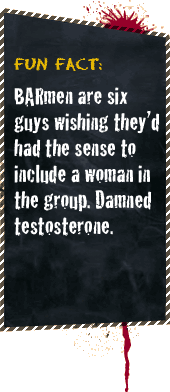Lesson Three: How People Make Distilled Spirits
Chapter One: You’ve Got to Start with Fermentation
Yeasts are tiny creatures that have done humankind a lot of favors, though they’ve been known to bedevil people (women, particularly) as well. They wander about the world looking for sugars (or glycerines and other nutrients) to consume or at least transform in a complex series of metabolic conversions that can in the right circumstances produce alcohol.
You need merely jam a lot of grapes into a small container and the sweet juice will pool up in the container; the yeast will convert that sweetness to alcohol. It happens, frankly, without mankind’s assistance. Grape growers have seen birds get drunk on ripe grapes hanging on the vine.
Alcohol has been used for millennia to preserve the beneficial properties of nature’s offerings: barks, flowers, leaves and roots had healing powers but left to their own, they would rot or wither. But their potency and vigor could be sustained in an alcohol solution; the medicine might last for years instead of merely days.
And it was medicine after all. Like many of the medicines people have employed ever since, experimentation led to other activities. If a little bit of the stuff made you feel better, then maybe a lot would make you feel younger, smarter and more beautiful.
Let There Be Law
Laws and regulations regarding people’s intake of alcohol are nearly as old as alcohol itself. From the Aztec prohibition against drinking on any day but holidays (the penalties were stiff – banishment and/or death) to strictures against selling on holidays or during election (honestly, don’t we all need a drink to survive those?), society is still trying to control this powerful drink.
Distilled spirits usually come in for the strongest controls, because they are more concentrated versions of beer or wine. Most beers weigh in at three percent to eight percent alcohol; wine varies from eight percent to as much as seventeen percent, before fortification or the addition of spirits to wine, pushes that number much higher.
It’s Natural, Man
Beer-making and winemaking precede the practice of distillation by centuries or even millennia. We can’t be sure when it all happened; perhaps nobody was sober enough to take the credit for inventing any of these drinks. Wine is the simplest to create: collect some ripe, tasty grapes. Put the grapes in some sort of pot (you can only eat so many so you save the rest for later), put a lid on it (to keep the flies away) and yeast is soon gobbling up the sugars in the grape juice oozing to the bottom. Fermentation creates not only alcohol, but heat and carbon dioxide too. The heat makes the rest of the grapes pop and spill their juice and before long the lid is jumping, courtesy of the carbon dioxide. It’s no wonder that Aristotle used the word “spirits” to describe alcoholic drinks. Something weird was going on in that pot.
Today’s winemakers are far more sophisticated: we use wooden barrels or stainless steel tanks instead of clay pots, though the newest gimmick in winemaking is a cement urn. We carefully control the temperature of our container (or its surroundings), and we make clever choices as to the timing of the fermentation, or when the grape juice is poured out of the container into another container (perhaps we want to age the wine in barrels for a bit longer), or when we finally pour the wine into a bottle and drop a cork or screwcap on it. But our winemakers aren’t doing much that wasn’t done five thousand years ago.
While winemaking likely preceded beer making, beer is considered the first alcohol beverage of civilization. Why? Because wine can be made on a very small scale, one pot at a time. In order to make beer, there has to be a lot of grain, so much grain that a society finds that only so much bread or pasta or cakes can be made and kept and still there is leftover grain that needs to be preserved for the coming months.
Beer Is Easy
Most books will argue that beer making was some sort of happy accident. Happy it was, we can be sure, but we do our ancestors a disservice when we think that they didn’t know what they were doing and somehow stumbled onto beer. Indeed, you have to set out to make beer in order to make a potable drink.
First, you make the grain warm and moist, like it would be in springtime, or like at the bottom of an urn buried in the ground. The grain, thinking it’s time to start growing into a plant, begins converting its starches into sugar so that it has energy to grow. Now roast the grain, so that it doesn’t use up the sugar trying to grow. Now grind it and add water, making it into a kind of soupy cereal. Boil it to kill off any bad bugs and then wait for yeast to do its thing. It will.
Contemporary beer makers will add hops (and other flavorings and potential preservatives – the hops flower is both) and then capture the carbon dioxide so that they can pump it back into the beer before it goes into bottle, can or keg. But they too are doing as our ancestors have done; they’re simply being more precise about an ancient practice.
Ready for Review?
Now you can click on the “Lesson Three – Distillation, Chapter Two” button below to continue your lessons on how alcohol beverages are made.


